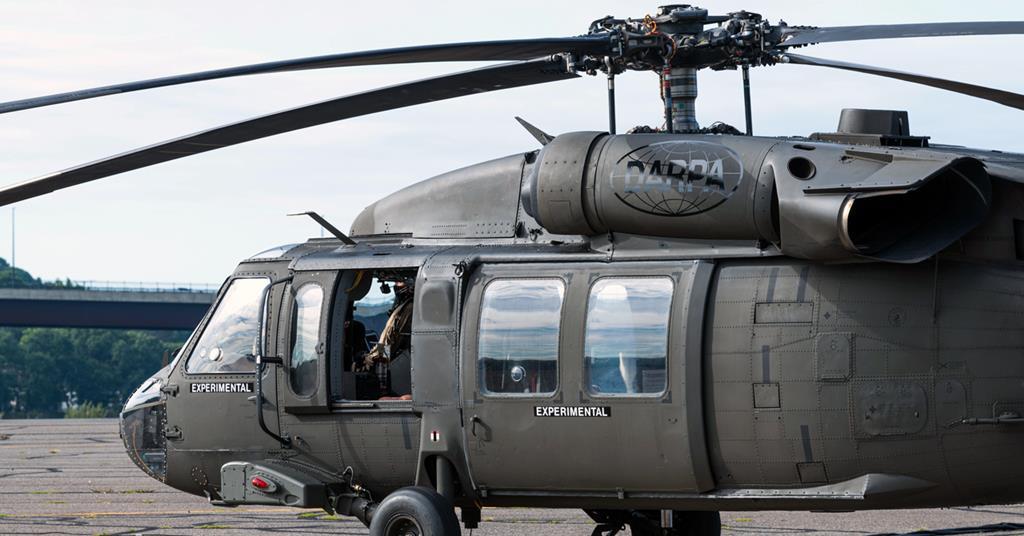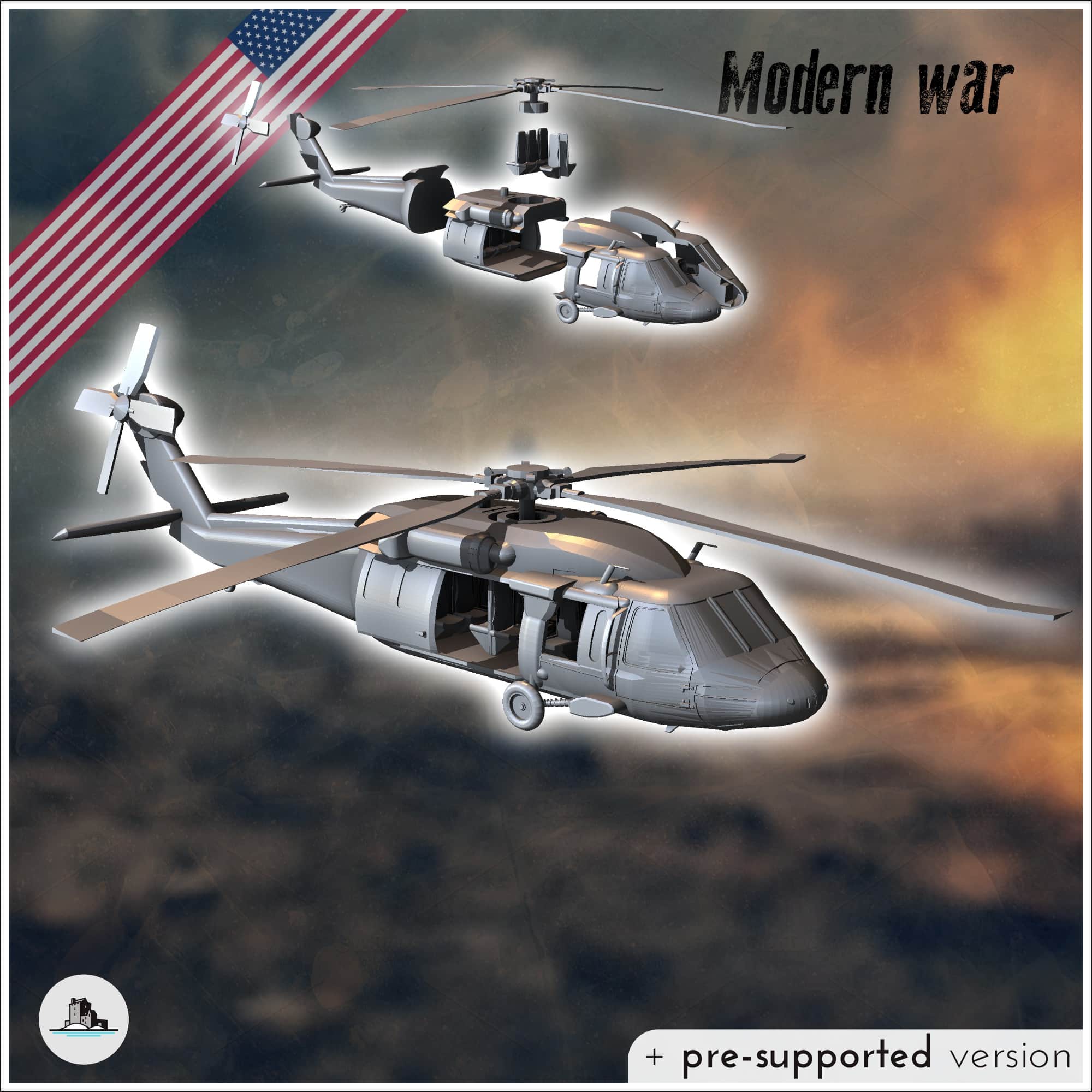Comprehending the UH60: The Ultimate Armed Force Helicopter Experience
The UH-60 Black Hawk helicopter stands for an important evolution in army air travel, combining durable design with complex functional capabilities. As we discover the history, specs, and technological improvements of the UH-60, it ends up being evident that its function in forming contemporary armed forces strategies is both significant and far-reaching.
History of the UH-60
Arising from the requirement for a flexible utility helicopter during the late 1960s, the UH-60 Black Hawk was created by Sikorsky Aircraft Corporation in reaction to the U.S. Army's demand for a contemporary battleground transportation helicopter. The design process started in 1972, finishing in its first flight in October 1974. The Black Hawk was engineered to replace the aging UH-1 Iroquois, also known as the "Huey," which had actually been a staple of Army aeronautics considering that the Vietnam War.

Over the years, the Black Hawk has actually undergone various upgrades, maintaining its relevance in modern army operations. Its success has actually caused the growth of various versions, offering numerous branches of the united state armed forces and allied forces worldwide, developing the UH-60 as a keystone of armed forces air travel history
Key Features and Specifications
The UH-60 Black Hawk is identified by its innovative layout and robust specifications, which add to its convenience on the combat zone. This multi-role helicopter features a twin-engine setup, powered by 2 General Electric T700-GE-701C engines, providing a maximum outcome of 1,800 shaft horsepower each. This powerful engine configuration enables the Black Hawk to reach a maximum rate of roughly 183 knots (211 miles per hour) and a service ceiling of 19,000 feet.
The aircraft's composite rotor blades offer extraordinary lift and ability to move, while its four-blade primary rotor system improves security (UH60). The Black Hawk is outfitted with innovative avionics, including a digital cabin and night vision capacities, making sure effective procedures in diverse problems. Its cabin can accommodate approximately 11 troops or carry as much as 8,000 pounds of cargo, making it appropriate for numerous logistical needs
The UH-60's modular layout permits simple upkeep and upgrades, making certain long life and adaptability in evolving army requirements. In addition, its advanced survivability functions, such as crashworthy seats and armor, improve staff security during goals. Generally, the UH-60 Black Hawk stands for a considerable advancement in military air travel innovation.
Operational Roles and Objectives
Flexibility is a trademark of the UH-60 Black Hawk, allowing it to execute a vast range of operational roles and objectives across various armed forces settings. Largely developed for army transportation, the Black Hawk can carry as much as 11 soldiers and is regularly used in air assault procedures, enabling quick insertion and removal of ground forces in objected to areas.

Along with troop transportation, the UH-60 is experienced at clinical evacuation (MEDEVAC) missions. Geared up with innovative clinical equipment and employees, it can promptly evacuate damaged soldiers from the battlefield, substantially enhancing survival rates in vital situations. The helicopter additionally plays a vital role in logistics sustain, providing products, ammunition, and devices to onward running bases in austere atmospheres.
Furthermore, the Black Hawk functions as a platform for special procedures objectives, consisting of reconnaissance and straight action. Its capacity to operate in numerous terrains and its low-flying abilities make it an essential property for units carrying out covert procedures.

Technical Developments
Development in air travel innovation has considerably improved the abilities of the UH-60 Black Hawk, guaranteeing its relevance in modern-day armed forces procedures. The helicopter is furnished with advanced avionics systems that give pilots with exceptional situational awareness, consisting of multi-functional displays, enhanced GPS, and innovative terrain understanding systems. These features allow accurate navigating and goal implementation, even in tough settings.
In addition, the integration of data systems permits for safe and rapid information exchange between units, assisting in coordinated operations. The UH-60's upgraded rotor systems and composite materials add to boosted efficiency, providing higher rate, dexterity, and minimized visit this page upkeep prices.
In addition, innovations in weapon systems, such as the capability to deploy precision-guided artilleries, boost the Black Hawk's function in fight situations. The helicopter's capacity to support clinical discharge goals is also strengthened by new medical tools and innovations, making certain effective patient care en route.
Finally, recurring improvements in stealth technology and noise reduction mechanisms additionally strengthen the UH-60's performance in covert operations, allowing it to run in aggressive territories with a minimized probability of detection. Jointly, these technological developments highlight the Black Hawk's sustaining prominence in armed forces aviation.
Effect On Modern Warfare
Improved capacities of the UH-60 Black Hawk have actually exceptionally affected modern-day warfare strategies and strategies. Its versatility in troop transportation, medevac operations, and reconnaissance functions has actually redefined the functional landscape for military forces. The helicopter's capability to operate in diverse atmospheres, from urban settings to sturdy surfaces, allows for better tactical adaptability, allowing commanders to adapt swiftly to changing battlefield problems.
The UH-60's sophisticated avionics and interaction systems improve situational awareness, assisting in real-time intelligence sharing and coordination amongst units. This ability is important in contemporary crooked warfare, where rapid decision-making can determine the outcome of engagements. In addition, the helicopter's ability for quick insertion and extraction of unique procedures forces has come to be a characteristic of contemporary armed forces campaigns, highlighting speed and accuracy.
In Addition, the Black Hawk's integration with unmanned aerial systems and other sophisticated innovations symbolizes a change towards multi-domain operations. As a result, the UH-60 not only works as an important possession in conventional conflicts but also plays a critical function in counterinsurgency and peacekeeping goals, highlighting its long-lasting effect on contemporary military doctrine and the development of warfare.
Conclusion
The UH-60 Black Hawk stands for a peak of army aeronautics, identified by its flexibility, progressed engineering, and durable style. Its abilities in army transportation, see here clinical discharge, and logistical assistance emphasize its vital duty in modern-day army operations. Continuous technological advancements and improvements have additional strengthened the Black Hawk's tactical importance, allowing rapid more response and versatility in diverse fight circumstances. Ultimately, the UH-60 continues to be an essential possession, forming the landscape of contemporary war and functional efficiency.

Innovation in aeronautics innovation has actually significantly improved the capacities of the UH-60 Black Hawk, ensuring its relevance in modern military operations.The UH-60 Black Hawk stands for a peak of armed forces aviation, characterized by its convenience, advanced design, and durable layout.
Comments on “Check out the UH60's Effect on Armed force Strategy and Tactical Movement”